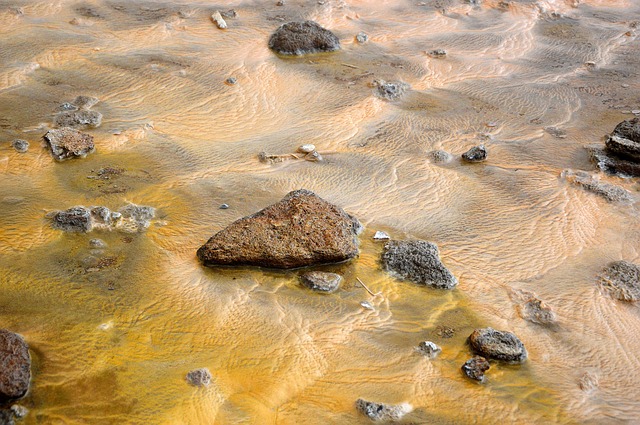Skip to main content
5 Travel Myths You Need to Stop Believing Right Now
Canal Comes Alive with Lighted Boat Parade.
Sub-Surface Movement of Groundwater
Unsaturated zone
- Water moves primarily downward due to gravity
- Water infiltrates from surface and moves downward to water table or ponds on impermeable surface (clay layer, etc.) to form a Perched water table
Saturated zone
- Water seeks its own level
- Water will flow from high water levels to low water levels
- Water levels can be measured by wells
- Contour map of water levels can provide information on groundwater flow directions
- In most cases, water flow direction is perpendicular to the water level contour lines (from high to low values of water level)
RECHARGE AND DISCHARGE AREAS
- Surface water and groundwater are generally connected with flows in and out of the subsurface
- Surface areas where water flows from surface into groundwater are called recharge areas
- Surface areas where water flows from groundwater out onto ground surface are called discharge areas
WATER LEVEL CONTOUR MAPS
- Contours are lines on 2-dimensional maps representing equal values of a parameter
- You are probably used to looking at topographic maps which show contour lines of ground surface elevation
- When a map is made with equal interval contour lines (every 1 ft, or every 2 ft, or every 5 ft, etc.), the spacing of contour lines provides visual clues to the change in slope
- Closely spaced contour lines would represent steep slopes
- Widely spaced contour lines would represent gentle slopes
- Water level contour maps provide the same information on water level slopes (hydraulic gradients)
HYDRAULIC GRADIENT
- Hydraulic gradient is the slope of the water level
- Hydraulic gradient = [water level at point A - water level at point B]/Distance between point A and B
- Large hydraulic gradient = steep slope in water level change
- Most regional groundwater flow has values of 0.001 to 0.0001
- Hydraulic gradient of 0.001 = 0.1 ft (1.2 inches) drop in water level over 100 ft distance
- Hydraulic gradient of 0.0001 = 0.01 ft (0.1 inch) drop in water level over 100 ft distance
DARCY'S LAW - GROUNDWATER FLOW RATE OR DISCHARGE
- Henri Darcy was a French engineer in late 1800s
- Darcy studied the flow of water through sand filters for water treatment
- He measured the flow rate or discharge (with units of volume of water per unit time; similar to stream discharge) through porous medium (sand)
- Q is the abbreviation for flow rate
- He found Q increased with increasing hydraulic gradient (steeper sloping water level)
- He found Q increased with cross-sectional area of flow (similar to streams)
- He defined an empirical constant for geologic material called hydraulic conductivity
HYDRAULIC CONDUCTIVITY (K)
- Hydraulic Conductivity is term used for permeability of geologic material to water flow
- K is abbreviation for hydraulic conductivity
- Units are length/time
- Q = K * Cross-Sectional Area (A) * Hydraulic Gradient
DARCY'S LAW - HOW FAST DOES GROUNDWATER FLOW?
- Velocity of water through porous medium can be calculated with Darcy's Law
- Velocity = (K * Hydraulic Gradient)/Effective Porosity
STREAMS AND GROUNDWATER
- Losing streams occur when surrounding groundwater levels are lower than the stream's water level
- Gaining streams occur when surrounding groundwater levels are higher than the stream's water level
- Flow in streams provided by groundwater is called baseflow
SPRINGS
- Water flows freely from ground surface
- Occur where water table intersects ground surface
- Springs seen along cliff faces generally occur when downward percolating water collects on an impermeable rock layer è this perched water table will flow out of cliff face above the impermeable layer
- Springs occur when fractures in impermeable rocks bring water to surface
- Springs occur when solution channels in limestone bring water to surface
WELLS
- Hole bored or drilled into the saturated zone
- Can measure water level in aquifer
- Can obtain water samples
- Can pump water to surface for water supply
PUMPING GROUNDWATER WELLS
- Pumping water from a well causes a lowering of the water level in the well (drawdown)
- Water will flow from surrounding geologic material (high water level) to the well (low water level)
- Cone of depression in the water surface produced by pumping
HIGH PLAINS OR OGALLALA AQUIFER
- High Plains aquifer occurs in the states of Colorado, Kansas, Nebraska, New Mexico, Oklahoma, South Dakota, Texas and Wyoming
- Ogalalla Formation (also referred to as Ogalalla Aquifer) is the principal aquifer in the High Plains aquifer
- Other permeable formations (sandstones, siltstones) are also part of the High Plains Aquifer
- Ogalalla Aquifer is an unconfined aquifer consisting of alluvium (sand and gravel)
- The alluvium was deposited by streams draining from the eastern Rocky Mountains
- Aquifer is recharged by rainfall (16 inches annually in western part of aquifer, up to 28 inches annually in eastern part of aquifer)
- Potential evapotranspiration ranges from 60 to 105 inches annually
- You do the math - how much recharge could occur!
- Potential evapo transpiration refers to maximum possible evapo-transpiration and generally actual evapotranspiration is lower
- Estimates of annual recharge to the aquifer are 0.024 to 6 inches per year
- Saturated thickness of alluvial aquifer ranges from 0 to 1000 ft and averages about 200 ft thick
- Prior to development, 3.42 billion acre-feet of drainable water was in storage in the aquifer
- Starting in the late 19th century, the aquifer was tapped by wells for irrigation
- By 1978, 170,000 wells pumped 23 million acre-ft per year
- In some areas, pumping rate exceeded aquifer recharge rate resulting in water table declines up to 100 ft
- Still have 3.25 billion acre-feet of drainable water in aquifer
- However, increased cost of pumping from deeper depths prohibits the use of this water for farming
Related Civil-Engg. Content




